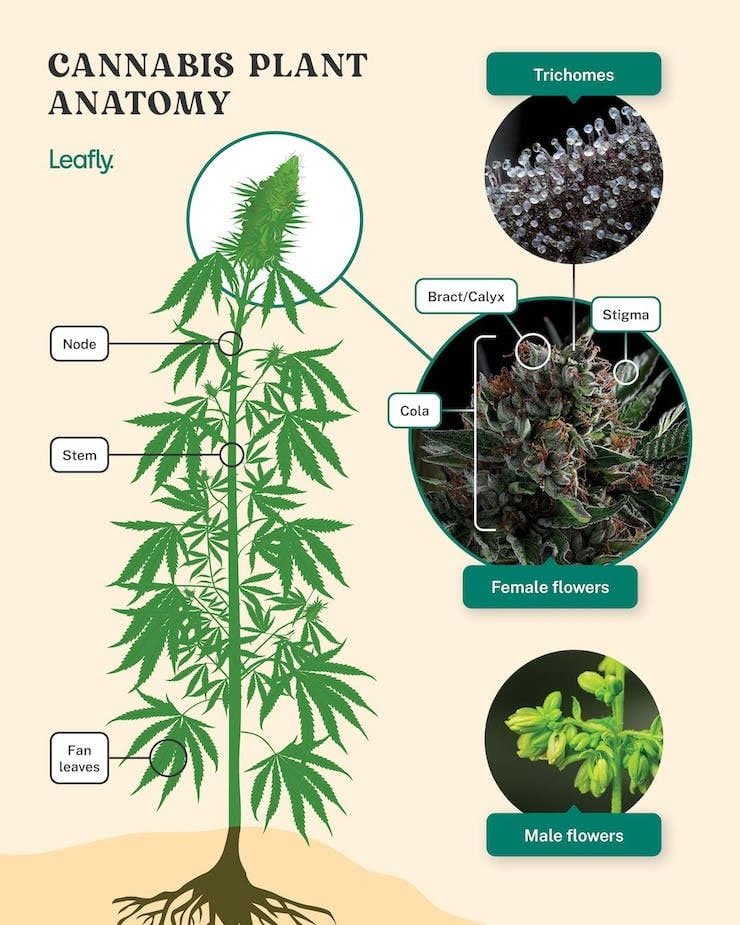We're here to help you understand Medical Cannabis in Mississippi. If you haven't yet found a physician to certify and register you for the medicinal cannabis program, we can recommend a physician who will assist you in obtaining your Mississippi Medicinal Cannabis Card from the MSDH.
Once you have your card, it's time to learn more about its proper use. That is where we come in. During our consultation, we'll inform you about the type of medical cannabis or cannabis-related products that are best suitable for your condition so that you get the best results possible. Below are the conditions that are approved for treatment with medical cannabis in Mississippi.
Common terpenes and their effects
There are about 400 known terpenes in cannabis, but experts have only linked a handful of them to specific effects.
Here are some common terpenes and their potential effects:
-
Beta-caryophyllene.
A major ingredient in cloves, rosemary, and hops, beta-caryophyllene could be beneficial for managing symptoms of anxiety and depression. colitis, cerebral ischemia, liver fibrosis, and Alzheimer-like diseases.
-
Beta-pinene.
If you’ve strolled through a coniferous forest, you know the smell of beta-pinene, which could also have potentially both anti-depressant, anti-cancer and anti-tumor properties. Pain Relief.
-
Humulene.
This terpene is found in ginseng, which has long been used in folk medicine for energizing effects.
-
Limonene.
One of the most commonly found terpenes, limonene has distinct citrus notes and may potentially have anti-cancer and anti-tumor properties. In mice, it’s been shown to have anti-anxiety properties.
-
Linalool.
Lovers of lavender as aromatherapy may want to seek out cannabis with linalool, which may help alleviate stress. Antidepressant - pain relief.
-
Myrcene.
Found in mangoes, myrcene has antifungal and antibacterial properties and could also have sedating effects. Reduces inflammation. - assist in anti-cancer and anti-tumor- pain relief
Keep in mind that much of the research around terpenes is still in early stages. More high quality studies in humans are needed to fully understand the health impacts of different terpene profiles.
Maximizing their benefits
Curious to start exploring terpenes? Here are some tips to keep in mind:
-
Read the label.
Some lab-tested cannabis brands include the terpene profiles (often the three most prevalent terpenes) and concentrations of the product (usually a number that sits around 2 percent).
-
Check for freshness.
Terpene concentration can diminish over time, so look for products that have a recent package date. If you’re going with flower, give it a sniff if you can.
-
Use caution with cannabis oil.
Oil-based vaping products often have added synthetic terpenes. It’s not clear if synthetic terpenes are less effective than natural ones, but they’re often used to create solvents and other household chemicals. Proceed with caution, and be wary of marketing materials that make promises about what they’ll do.
-
Lay off the heat.
There’s some evidence that dabbing, which involves high heat, could degrade synthetic terpenes, resulting in potentially harmful byproducts. Until experts understand more about how heat affects terpenes, you may want to stick with vaporizing flower at a low temperature or consuming edibles.
-
Keep a journal.
As you try different terpene profiles, take note of your ingestion method and how you feel. Over time, this can help you pinpoint the best terpene profile for the effects you’re after.
Last thing to consider, The Terpenes total percent in the flower helps you determine how much of the THC your body will absorb. A 1-2.4% is standard percentage, but if you have Flower with Tempen levels in the 2.5-3% or higher your body absorbs much more of the THC and in turn you will get a much greater effect you are looking for.
Full-Spectrum vs Distillate
What Are the Major Differences Between Full Spectrum and Distillate?
Easy answer is What the Extract Contains
One of the main differences between full-spectrum vs distillate extracts is the cannabinoids/Terpenes each concentrate contains.
More than 110 cannabinoids, such as THC, CDB, CBN, and CBG,( these are Terpenes) exist, and each of these interacts with your body’s system differently.
Full-spectrum extracts retain the complete cannabis plant profile including its cannabinoids, flavonoids, Terpenes, and other phytochemicals.
A Distillate extract only contains the cannabinoids and other natural plant substances the creator of the product wants, THC, No Terpenes are in the distillate.
The Effects
Because of the cannabinoids and other phytochemicals in the extract, distillate and full-spectrum weed products produce different effects.
A THC Distillate will give you a potent high, but limited effects because there are little to no other compounds included. Creators of distillate products can isolate near pure forms of THC.
A Full-spectrum product contains psychoactive (for example, THC) and non-psychoactive (such as CBD) cannabinoids/Terpenes, so you’ll potentially benefit from a therapeutic high.
The effects will be more balanced, and more flavorful with a full-spectrum extract. Full spectrum products contain minor cannabinoids like CBG and CBN which may have pain-relieving, anti-inflammatory, and antibacterial properties. Or, with a product containing CBD and THC, you won’t likely experience a potent high because CBD reduces the effects of THC.
The Cost
In general, Full-spectrum extracts are rarer and costlier than distillate concentrates because the extraction process is more time consuming and the equipment more expensive. But the cost differs depending on the manufacture and on the cannabinoids/Terpenes, and THC level.

